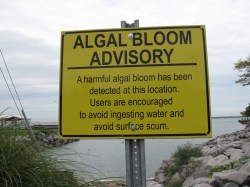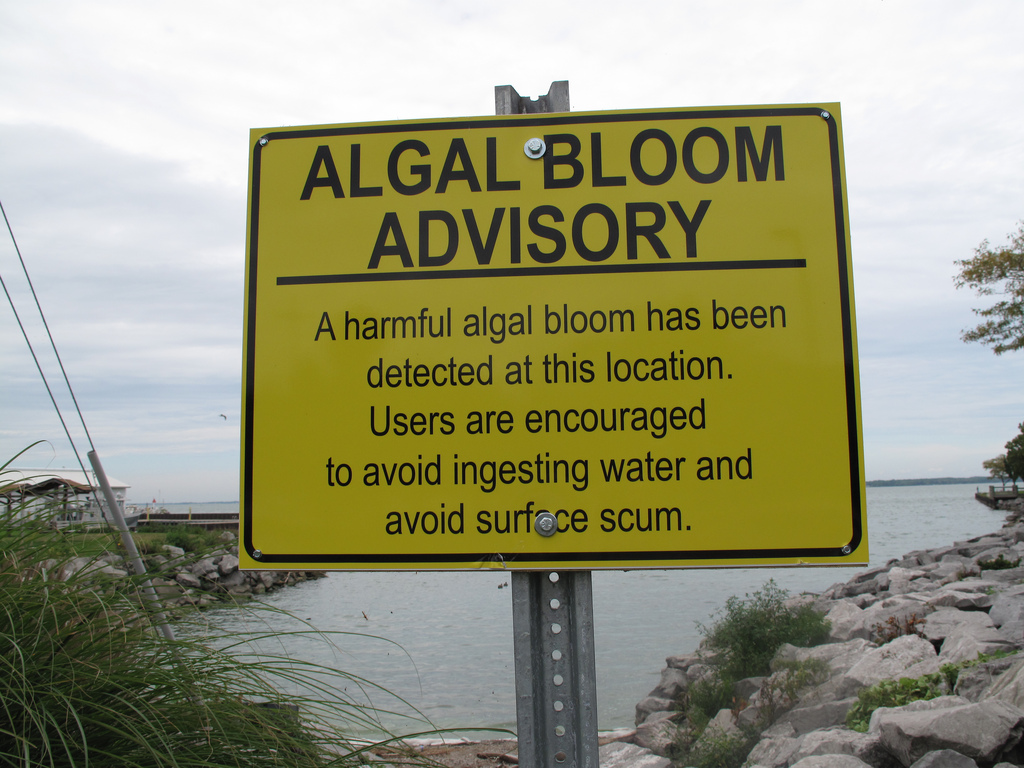
Ohio Sea Grant and Stone LaboratoryA sign last year warned of poisonous algae in Sandusky Bay, part of Lake Erie.
Spring officially arrives today, and meteorologists are forecasting heavy rains this season in parts of the Midwest. That sounds lovely — better than a drought for sure. But those rains will wash fertilizer, animal waste, and other nutrient-rich pollution into Lake Erie, where they are expected to fuel another bumper season of toxic blue-green algae.
As we reported last year, the toxic algae blooms that coated the Great Lakes from the 1950s to the 1970s have returned. Last century’s blooms were fed with nutrients from human sewage; the latest iterations are caused by sloppy farming practices. As much as one-sixth of Lake Erie was coated with algae last year, killing wildlife and stinking out homes and holiday destinations.
With a wet spring forecast, those blooms are tipped to return this year. From The New York Times:
The spring rains reliably predict how serious the summer algae bloom will be: the more frequent and heavy the downpours, the worse the outbreak. And this year the National Weather Service says there is a higher probability than elsewhere of above-normal spring rains along the lake’s west end, where the algae first appear. The private forecaster Accuweather predicts a wetter than usual March and April throughout the region. …
“2002 was the last year that we didn’t have much of a bloom,” said Thomas Bridgeman, a professor at the Lake Erie Center at the University of Toledo. “2008, ’09 and ’10 were really bad years for algal blooms.
“And then we got 2011.”
2011 was the wettest spring on record. That summer’s algae bloom, mostly poisonous blue-green algae called Microcystis, sprawled nearly 120 miles, from Toledo to past Cleveland. It produced lake-water concentrations of microcystin, a liver toxin, that were 1,200 times World Health Organization limits, tainting the drinking water for 2.8 million consumers.
Welcome to spring, everybody.



